Tom Mallard
Western Thunderer
Thanks very much AdeAbsolutely wonderful top drawer modelling.
Thanks very much AdeAbsolutely wonderful top drawer modelling.
Very kind Andrew. The Lionheart offering should satisfy a lot of L&B devotees, so I hope you enjoy yours.I can only echo what others have already said. Exquisite model making. You achieve a standard way above that of us mere mortals.
I can’t wait to see the finished painted engines as they are a particular favourite of mine. I’ll just have to settle for one of the Lionhart rtr offerings though!
Thankyou Dave,Tom.
As others have already said - absolutely superb modelling. A firm favourite of mine (I was a supporter of the Lyd project, and still love to see it at the FfR), I too look forward to seeing them painted.
It really was a shame we couldn't meet up on Saturday as I very much would have enjoyed seeing the locos in the flesh, so to speak.
Dave.
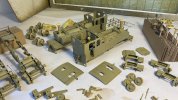
Howard,Great Post Tom and many thanks for the update.
I wonder, why not 'cellulose' for the upperworks? It is equally effective there as on the chassis, with the added benefit that the lining can then be done in enamelsallowing correction without risk of interaction. You can get small quantities mixed in any one of 5,000 hues... should be a Maunsell green in there somewhere!
Really looking forward to seeing the finished job!
With Best Wishes,
Howard

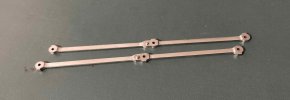
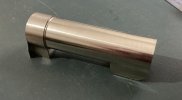
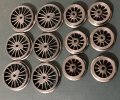
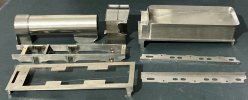
Greetings Tom,Drawings took 14 months to appear from Glasgow University North British archive which I don't think is really acceptable for a commercial service... They say that there was still a back log from lockdown they were working through, not helped at all by sharing a copy facility with the University.
. . . the square hole for the axles... Anyone out there with a 1/8" square push broach? The driving wheels are modern castings, the tender wheels from vintage (antique?) castings.
 www.homemodelenginemachinist.com
www.homemodelenginemachinist.com
 www.model-engineer.co.uk
www.model-engineer.co.uk
Cheers Dave, fear not - the frame extensions have stretchers, a spacer and the cylinders to help out in the end.Beautiful work, as always, Tom.
My, those front frame extensions look a bit vulnerable. The sort of thing I'd end up bending. Hopefully, some frame spacers/stretchers will stiffen things up a bit.
Dave.
Thanks Brian, this is good to know. I’d wondered about the Australian supplier, and will likely follow this route. For the time being I only need to do the 6 holes on this model...Greetings Tom,
I had a similar experience, but may have been luckier than you. My £285 prepaid order took only six months - following many excuses to my gentle reminders, and long before the pandemic. However, I do appreciate they house and care for this historical material. I received superb service whenever visiting in person many years ago.
The fiendishly expensive commercial offerings £xxx would seem disappointing, requiring a 0.1285" dia oversized pilot hole to start with. The broach nicks out the corners while leaving small radii on the flats.
JYTool in Australia has 1/8" push broaches on eBay at about £50. This is markedly less than from other vendors.
1/8" Square Coating Broach Inch Size High Speed Steel Cutting Tool | eBay
A wobble or rotary broach is an alternative. This type of broach is easily made, but making the holder for it is rather more work.
Hemingway Kits offer parts for making the holder. Compact Rotary Broach - hemingwaykits.com
Some hobbyist discussions are at:
Rotary Broach Tool Design
Hiya people, The other, after reading some information on rotary broach tooling and seeing a rotary broach in action, I was having my lunch at work and thought I would try my hand at designing a rotary broach tool. In the initital rough sketch i had set out the design with a fixed MT2 Arbor...www.homemodelenginemachinist.com
and
Rotary broaching | Model Engineer & Model Engineers Workshop
Rotary broaching inside forms, outside formswww.model-engineer.co.uk
My apologies if I've missed anything - but why do you need squared holes? As Brian mentions solutions are expensive, for all the loco's my Dad scratchbuilt not one of them used squared axles. We bought the cast iron wheels and turned them up, we then had a 3/18" taper reamer to "drill" from the rear of the wheel. The wheels were then pushed onto round axles by hand and quartered by the Mk 1 eyeball (aligning spokes). We then checked the chassis would roll correctly and then finished by pushing the wheel fully onto the axle using the lathe and tailstock to ensure everything was square and correct B2B. We never needed a squared axle - and to be a pedantic Scale7 nerd - neither did the prototype!Wheels have a refined coarse scale profile and the drivers are yet to recieve crankpin holes and the square hole for the axles... Anyone out there with a 1/8" square push broach? The driving wheels are modern castings, the tender wheels from vintage (antique?) castings.

Possibly because the axles have squared ends?My apologies if I've missed anything - but why do you need squared holes?
I'm sure you could do the same with an 1/8" taper reamer.
